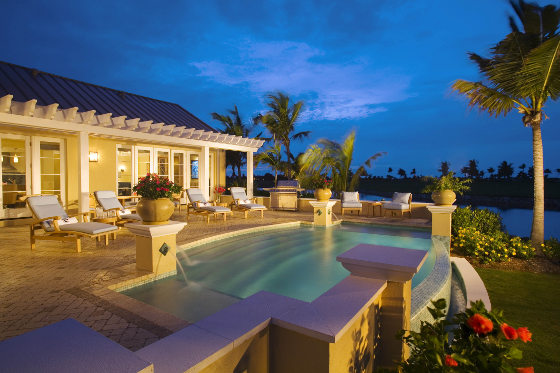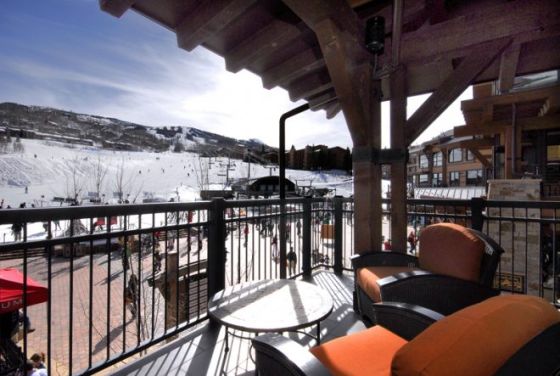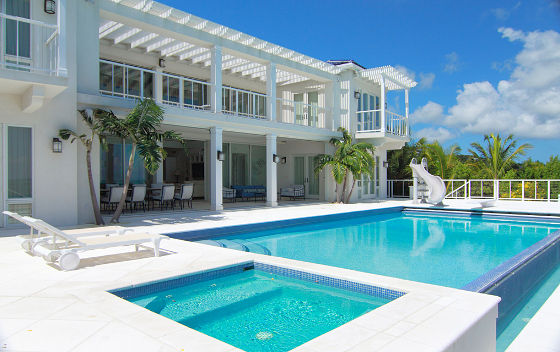Destination clubs have been increasing in visibity over the past few years. They provide a good alternative to luxury vacation homes, in fact some destination club owners have sold their second homes when they join a club. But, there are pros and cons on both sides. If you're thinking of buying a vacation home or joining a destination club read through the factors below before making your choice.

Initial membership fees in a destination club vary from below $20,000 to over $500,000 but are still typically lower than a 20% down payment for a comparable luxury vacation home - in some cases much lower. For examples of the initial fee, days of use and the average home values see the chart compare destination clubs and related links. The annual cost of a vacation home includes mortgage payments, taxes, maintenance, repairs, utilities, cleaning etc and can equate to 6 - 9% of the value of the home. The annual dues for a destination club range from under $5k to over $70k and are significantly less than the total annual costs of ownership of a comparable second home.
Some destination clubs do not offer any equity participation, but on resignation members may be refunded 75% of their initiation fee, depending on the club and their membership type. Some clubs do offer a direct equity participation in the clubs real estate. In contrast as a vacation home owner you will benefit from the full increase (or decrease) in the value of your property, which over time can be a substantial sum (up or down!!). This linked article has a full comparison of the economics of joining a destination club compared to owning a second home and includes a spreadsheet that you can download and adjust.
Financing
Third party financing of destination club membership can be quite difficult, because you're sometimes buying a membership and access to properties but not purchasing the actual real estate, and most lenders are not willing to lend directly for memberships. Given this, in the past some destination clubs, such as Quintess and Exclusive Resorts, with large upfront payments assist members by allowing payment of the initiation fee over several years. A few members opt to use second mortgages or home loans on their primary residences to fund initiation fees, most others just use their liquid assets. Finding financing for a vacation home is comparatively easier and mortgage payments may be tax deductible. Some other clubs have lower initial fees where financing is not an issue.
In destination clubs, members do not have to bother about repairs and maintenance to the properties. The club takes care of all of them and the costs are covered by annual membership fees or nightly fees. In contrast, owners of second homes can spend large amounts of both time and money on maintenance and repairs. If you own a vacation home and the pipes freeze in the winter, then you have to find a plumber yourself or have an arrangement with a local property management company to look after such issues.

Service
Service levels at vacation homes are entirely up to the owner, who must hire providers or make arrangements themselves. Destination clubs offer very high, full service levels that can cover everything from pre trip planning and organizing travel arrangements, to on site concierges and housekeeping, private chefs, booking tee times, lift tickets, favorite restaurants and a wide variety of other services and activities.
Personalization
As a vacation home owner it's up to you to pick the furniture, décor and layout to suit your tastes. You can have your pictures on the walls and photographs of friends and family on the shelves. Everything can be just how and where you want it. Destination clubs are trying to match some of these aspects by stocking shelves with the food you like and some use digital images of friends and family in digital picture frames, all set up before you arrive.
Destination clubs allow members to access all the luxury properties managed by the club. These can include beach homes, ski houses, condominiums in urban locations and houses right on the golf course. The clubs may offer from ten to hundreds of multi-million dollar residences in stunning geographic locales around the world. On the other hand, second home owners only have access to their own property in one location. This allows you to really get to know an area and the other homeowners in the neighborhood, but does not provide the variety that clubs enable.
Availability
Destination clubs enable members to visit any club property for a certain number of days or weeks per year. Each club has it's own reservation process and rules which can vary with the level of membership. These define how far in advance a member can reserve time and how much time a member can book at once. The clubs usually have a member to home ratio of between 6:1 and 8:1 and their homes are in use between 50% and 75% of the time. So overall there is plenty of available time. In addition some of the clubs allow unlimited use on a space available basis - that is, if the reservation is made in a short window of around 45-60 days before departure.
Various research has found that vacation home owners use their homes between 25-35 days a year. Owners of second homes do not need to book ahead to spend time at their own property. As an owner you can come and go as and when you please, without any planning or coordination. You can also allow friends and family to use your home even if you're not there, whereas destination clubs have limits on the use of homes if a member is not present.

Guilt and Obligation
Vacation home owners often feel guilty when not using their second home for vacations, and even feel obligated to spend their vacation time at their second home as they have spent so much money and time on it. Therefore people end up spending time in their vacation home when they would rather be elsewhere. No such guilt factor influences destination club members as they are not tied to any one property.
Rental Income
Renting out a vacation home for a period every year can bring in additional income that can cover some of the higher costs of ownership. As an owner you'll have to decide if you want to manage the rental process yourself or hire a management company to take care of this. You'll also have to deal with an impersonalized house when you return, with family photographs and personal items having being removed to accommodate tenants. Destination clubs do not allow members to rent out their time.
So overall there are several factors to consider in your decision. You may find a vacation home is better if you know you like one location and are happy to keep returning. Plus you don't mind all the repairs and maintenance responsibilities and/or you plan to rent it out or use it for a retirement home. A destination club would suit you if you prefer a variety of locations and a full service vacation experience. Please contact us if you have any questions on the above factors or anything else to do with destination clubs.
The table below summarizes the comparison.
| Factor | Destination Club | Vacation Home |
| Costs | Initial Fee + Annual Charge + Daily Fee | Down payment, Mortgage, Maintenance, Upkeep etc |
| Repairs & Maintenance | None | All |
| Equity | Some Clubs | Yes |
| Full Service | Yes | No |
| Personalization | Some | All Yours |
| Multiple Locations | Yes | No |
| Availability | Various | All Yours |
| Guilt & Obligation | None | All Yours |
| Rental Income | No | Yes |
Read the related articles below for more information. In particular if you're interested in joining a club then download our detailed in-depth guide to destination clubs.
You can also look through examples of the luxury vacation homes that destination clubs offer and search through them to see the homes that are available in your favorite destinations.
Other articles that will prove useful as you compare options, and particularly as you assess the clubs are: The Top 7 Reasons to Join a Destination Club and Top 5 Reasons NOT to Join a Destination Club.















